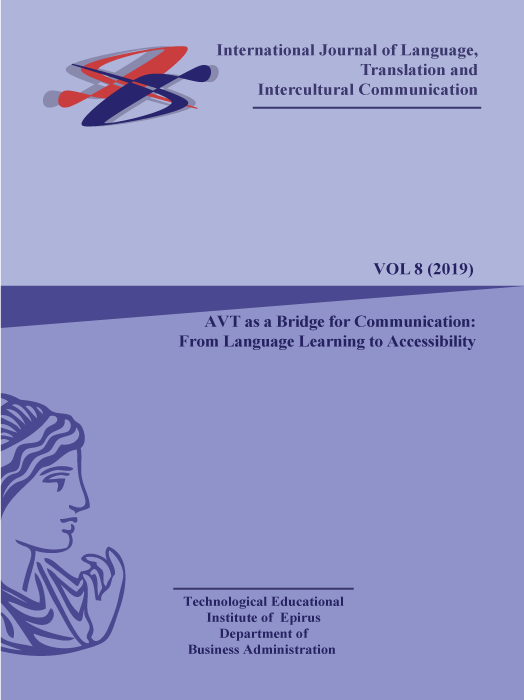Spilling the Beans on Understanding English Idioms Using Multimodality: An Idiom Acquisition Technique for Iranian Language Learners

Published:
Apr 15, 2019
Keywords:
Idiom Hypotheses and Models Technology in idiom learning Idioms Idiom website
Abstract
Idioms are ubiquitous in English language. Despite their ubiquity, learning idioms is a thorny issue for second language learners. Multiple researchers have scrutinized different aspects of idiom learning by second language learners: important factors in processing idioms in L2 (Cieślicka, 2015); the incorporation of technology in idiom learning (Khoshnevisan, 2018b); idiom assessment (Khoshnevisan, 2018a). A number of studies have been conducted concerning the application of the Idiom Diffusion Model—an L2 idiom processing model—to develop the idiomatic competence of learners, however, the pertinent literature is sparse: Greek, German, and French (Liontas, 1997); Greek (Katsarou, 2013); Korean (Türker, 2016). It turns out that the application of the model to Persian language learners is missing. To address the gap, the author conducted a qualitative study to explore the perceptions of Iranian language learners about using a website to learn idioms. The researcher employed an online questionnaire to delve into the learners’ perceptions. The findings imply that the majority of the participants used video and picture modules to arrive at the figurative meaning of the idiomatic phrases. However, in terms of semi and post-lexical idioms, most learners benefited from translations to decode the meanings. The findings corroborate the theory that translation facilitates learning idioms.
Article Details
- How to Cite
-
KHOSHNEVISAN, B. (2019). Spilling the Beans on Understanding English Idioms Using Multimodality: An Idiom Acquisition Technique for Iranian Language Learners. International Journal of Language, Translation and Intercultural Communication, 8, 128–143. https://doi.org/10.12681/ijltic.20281
- Section
- Articles

This work is licensed under a Creative Commons Attribution-NonCommercial-ShareAlike 4.0 International License.
Copyright Notice
Authors who publish with this journal agree to the following terms:
- Authors retain copyright and grant the journal right of first publication with the work simultaneously licensed under a Creative Commons Attribution License that allows others to share the work with an acknowledgement of the work's authorship and initial publication in this journal.
- Authors are able to enter into separate, additional contractual arrangements for the non-exclusive distribution of the journal's published version of the work (e.g., post it to an institutional repository or publish it in a book), with an acknowledgement of its initial publication in this journal.
- Authors are permitted and encouraged to post their work online (e.g., in institutional repositories or on their website) prior to and during the submission process, as it can lead to productive exchanges, as well as earlier and greater citation of published work (See The Effect of Open Access).
Downloads
Download data is not yet available.
References
Abel, B. (2003). English idioms in the first language and second language lexicon: A dual representation approach. Second Language Research, 19(4), 329-358.
Amer, M. (2014). Language learner’s usage of a mobile learning application for learning idioms and collocations. CAILICO Journal, 31(3), 285.
Boers and Demecheleer (1997). A few metaphorical models in economic discourse. In W. A. Liebert, G. Redeker, & L. Waugh, Discourse and perspective in cognitive linguistics, 115-129. Amsterdam: John Benjamins.
Cieślicka, A. B. (2015). Idiom acquisition and processing by second/foreign language learners. Bilingual figurative language processing, 208-244.
Cooper, T. C. (1999). Processing of idioms by L2 learners of English. TESOL Quarterly, 33 (2), 233-262.
Guduru, R. (2012). Learning Academic Idioms Some Useful Techniques for Beginner Learners. Language in India, 12(2).
Jackendoff, R. (1997). The Architecture of Language Faculty. Cambridge, MA: MIT Press.
Katsarou, E.C. 2013. Grasping the nettle of L2 idiomaticity puzzle: the case of idiom identification and comprehension during L2 reading by Greek learners of English. In W. Lavidas, T. Alexiou, & A.M. Sougari (Eds.). Major trends in theoretical and applied linguistics (vol. 3, pp. 143–158). London: Walter de Gruyter.
Khoshnevisan, B. (2018a). Idiom Assessment: To Go off the Beaten Path. In Proceedings of the GLOCER Conference (pp. 2-9). Sarasota, FL: ANAHEI Publishing, LLC.
Khoshnevisan, B. (2018b). The Effect of Incorporating Animated Pedagogical Agents in Apps on L2 Idiom Acquisition and Retention. In Proceedings of the GLOCER Conference (pp. 75-83). Sarasota, FL: ANAHEI Publishing, LLC.
Khoshniyat, A. S., & Dowlatabadi, H. R. (2014). Using conceptual metaphors manifested in Disney movies to teach English Idiomatic expressions to young Iranian EFL learners. Procedia-Social and Behavioral Sciences, 98, 999-1008.
Kress, G. and Van Leeuwen, T. (2001) Multimodal Discourse, London: Arnold.
Liontas, J. I. (1997, November). “Building castles in the air”: The comprehension processes of modern Greek idioms. Paper presented at the 15th International Symposium on Modern Greece, Kent State University, Kent, OH.
Liontas, J. I. (2002). Vivid phrasal idioms and the lexical-image continuum. Issues in Applied Linguistics, 13(1), 71 – 109.
Searle, J.R. (1979). Metaphor. In Ortony, A. (Ed.), Metaphor and thought (pp. 92-123). Cambridge: Cambridge University Press.
Türker, E. (2016). Idiom acquisition by second language learners: The influence of cross-linguistic similarity and context. The Language Learning Journal, 1-12.
Warren, B. (2005). A model of idiomaticity. Nordic Journal of English Studies, 4(1), 35-54.


